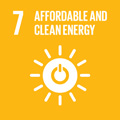- Docente: Davide Pinelli
- Credits: 6
- SSD: ING-IND/25
- Language: Italian
- Moduli: Davide Pinelli (Modulo 1) Alessandro Zambon (Modulo 2)
- Teaching Mode: Traditional lectures (Modulo 1) Traditional lectures (Modulo 2)
- Campus: Bologna
- Corso: Second cycle degree programme (LM) in Molecular and industrial biotechnology (cod. 9213)
-
from Mar 05, 2025 to Apr 01, 2025
-
from Mar 17, 2025 to Apr 14, 2025
Learning outcomes
The purpose of this course is to present and discuss tools for the understanding of the performance of equipment and plants in the biochemical and bioprocess industry. The course also introduces to the basic elements of the unit operations involved in downstream processing in biotechnology. Both principles of biochemical processes and simple methods of study of selected apparatus and operations are covered in order to provide skills for a quantitative, though simplified, prediction of their behaviour. The goal is to provide the students with basic tools for making previsions about the performance of biochemical reactors as well as with the main features of typical equipment of the biotechnological industry (choice of the appropriate unit operation for a given separation).
Course contents
Kinetics of biological interest: Monod kinetic model, structured and segregated models. Operating modes and performance analysis of bioreactor: continuous systems, batch and semi-continuous (fed-batch). Configurations, features and operating procedures for agitated bioreactors. Conduction of bioreactors and problems of conversion.
Introduction to bioseparation processes: from the laboratory to the industry. Cell lysis: osmotic, chemical and mechanical methods. Sedimentation: equation of motion, equilibrium sedimentation. Centrifugation: description and use of different centrifuges and principles of design. Flocculation. Protein precipitation: protein solubility (salting in and salting out), precipitate formation phenomena, design of precipitation systems. Filtration: conventional and cross flow filtration. Filter media and equipment. Membrane separation processes: classification based on the driving force, description and use of different membrane processes in biotechnology. Membrane modules. Concentration polarization: film theory model. Microfiltration, ultrafiltration and diafiltration. Membrane fouling. Sterile filtration and filtration for virus removal. Liquid/liquid extraction: extraction with solvent, extraction in aqueous phase. Principles of stage calculation and scale-up and design of extractors. Adsorption: fundamental principles, equilibrium isotherms. Chromatography: process description, chromatographic techniques. Chromatography column dynamics. Principles of drying: freeze-drying and spray drying. Introduction to crystallization processes. Description of case studies and seminars by experts.
Readings/Bibliography
C. Gostoli, Trasporto di materia con elementi di reattoristica chimica e biochimica, Pitagora Editrice, Bologna, 2011.
H.S. Fogler, Elements of Chemical Reaction Engineering, 2a edizione, Prentice-Hall International Inc., 1995.
O. Levenspiel, Chemical Reaction Engineering, 3a edizione, J.Wiley & Sons, 1999.
Metcalf & Eddy, Inc., Wastewater Engineering - Treatment and Reuse, 4a edizione, McGraw Hill, 2003.
R.G. Harrison, P. Todd, S. Rudge and D. Petrides, Bioseparations Science and Engineering, Oxford U. Press, NY, 2003.
[Though warmly recommended to the students for widening their knowledge of the various topics, these books are neither formally adopted as textbooks nor followed in any detailed way].
Teaching methods
The lessons on the above-mentioned topics and solution of exercises in class.
Assessment methods
The aim of the final examination is to evaluate the achievement of the main goals of the course, specifically:
- the capability to adopt suitable analysis and calculation techniques, which are presented during the course, in order to understand the working principles of the equipment and the basis design rules, in addition to the understanding of the chemical and physical phenomena occurring in equipment and processes of the chemical industry;
- the capability to use the outcomes obtained by the above analysis to improve the performances of equipment and processes of the chemical industry.
The final assessment will be via a written exam and an oral part. During the written assessment, the use of books, drawings, plots, tables, memoranda and text of exercises is allowed. The goal of this assessment is to check if the student can solve exercises on various topics of the course. The score is given in thirtieths. The goal of the oral part is to ascertain the full understanding of both the basic principles and the design rules of equipment and processes considered during the course. The score of the oral part is given in thirtieths. The global score takes into account the results obtained both in the written and in the oral assessments.
Teaching tools
Video projector, PC, blackboard. Syllabus, tables, plots and text of exercise: distributed in class during the course.
Office hours
See the website of Davide Pinelli
See the website of Alessandro Zambon
SDGs




This teaching activity contributes to the achievement of the Sustainable Development Goals of the UN 2030 Agenda.
